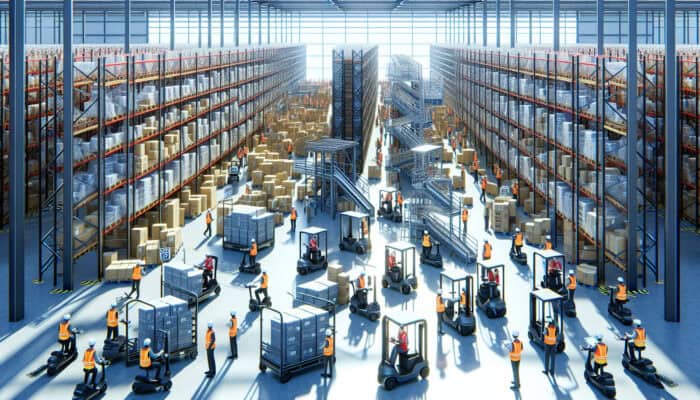Discover Cost-Effective Transport Solutions for Your Clearance Items
What Defines Affordable Transport Options?

Affordable transport for clearance items encompasses a variety of cost-effective logistics solutions designed to facilitate the seamless movement of goods. These transport methods are critical for businesses involved in managing clearance items as they enable efficient product movement at significantly reduced prices. By utilising these options, companies can enhance their inventory management, maintain profitability, and reduce waste. Various low-cost transport methods that businesses can consider include:
- Road transport
- Rail transport
- Sea freight
- Air freight
- Bicycle couriers
- Shared transport services
- Freight forwarding
- Third-party logistics providers
By leveraging these diverse transport methods, businesses can greatly influence their operational strategies, especially in the highly competitive UK market. The focus on efficiency and cost reduction underscores the importance of low-cost transport in logistics planning, ultimately fostering sustainable business practices that benefit both the bottom line and the environment.
Why are Clearance Items Vital for Business Success?
Clearance items are products sold at significantly discounted prices, often implemented to eliminate excess inventory or to make space for discontinued products. This strategy not only helps businesses to recover a portion of their initial investment but also attracts price-sensitive customers, which is essential for maintaining a strong market presence. The significance of low-cost transport in this context cannot be overstated; it enables businesses to move these items quickly and economically. By optimising their transport logistics, enterprises can ensure that clearance items reach consumers efficiently, thereby increasing sales velocity and reducing holding costs.
Examining the UK Market Dynamics for Clearance Items
The UK market shows robust demand for clearance items across various sectors, including retail, electronics, and home goods. The need for affordable transport solutions becomes increasingly evident as businesses strive to manage their inventory amidst fluctuating consumer preferences and economic changes. The surge of e-commerce has further amplified the demand for efficient logistics strategies that incorporate low-cost transport options for managing clearance stock effectively. Companies that adopt these solutions can gain a competitive edge, ensuring that clearance items are delivered swiftly and cost-effectively, thus meeting consumer demand while safeguarding profit margins.
Gain Expert Insights on Cost-Effective Transport for Clearance Items

What Are the Best Practices for Low-Cost Transport Implementation?
Logistics and supply chain management experts advocate for several best practices that are essential for effective low-cost transport. Firstly, route optimisation is paramount; this process involves a thorough analysis of delivery pathways to minimise travel time and fuel consumption, significantly lowering overall costs. Another vital practice is shipment consolidation, which allows businesses to combine multiple deliveries into a single shipment, ultimately reducing the total number of trips needed. Establishing favourable rates with carriers can lead to substantial savings, especially when leveraging volume discounts. For instance, a UK retailer might partner with a local logistics provider to secure a fixed-rate shipping agreement for their clearance items, resulting in considerable cost reductions over time.
Real-world examples effectively demonstrate the success derived from implementing these strategies. A notable UK furniture retailer utilised route optimisation software, achieving a 15% reduction in fuel costs. Similarly, a leading electronics distributor managed to cut transportation costs by 20% through the consolidation of shipments from various suppliers. These case studies highlight the tangible advantages of adopting best practices in low-cost transport, showcasing their effectiveness in driving business success.
How Can Businesses Successfully Implement Low-Cost Transport Strategies?
For businesses looking to effectively implement low-cost transport strategies, it is crucial to start with a comprehensive evaluation of their existing logistics operations. Identifying areas where costs can be reduced is essential; this may include analysing transport routes, shipment sizes, and carrier agreements. Once inefficiencies are identified, companies can take actionable steps such as forging partnerships with reputable transport providers that specialise in clearance item logistics. Building strong relationships with these providers can lead to preferential rates and improved service quality.
Moreover, investing in advanced technologies such as transport management systems (TMS) can significantly enhance operational efficiency. These systems provide invaluable data that empower businesses to make informed decisions regarding their logistics strategies. By leveraging these insights, companies can continuously refine their approach, ensuring they remain competitive in the ever-evolving landscape of clearance items.
What Common Challenges Are Encountered in Low-Cost Transport?

Low-cost transport presents a unique set of challenges. Fluctuating fuel prices can significantly affect logistics costs, highlighting the need for businesses to closely monitor market trends. Furthermore, regulatory compliance represents another major challenge, especially given the constantly evolving landscape of UK transport regulations, which include emissions standards and safety requirements. Companies often find themselves navigating a complex regulatory framework that can complicate their transport operations.
To effectively tackle these challenges, businesses should adopt flexible planning strategies that enable them to respond swiftly to changing conditions. For example, implementing fuel surcharges can help to mitigate the financial impact of rising fuel prices. Moreover, staying informed about the latest regulatory changes through industry associations and networks can equip businesses with the knowledge needed to maintain compliance while optimising their transport strategies.
What Role Does Technology Play in Improving Low-Cost Transport Efficiency?
Technology plays a crucial role in enhancing low-cost transport strategies. The advent of route optimisation software has revolutionised logistics, allowing companies to identify the most efficient delivery routes, thus significantly decreasing transportation costs. Real-time tracking systems provide visibility throughout the supply chain, enabling businesses to monitor shipments and enhance communication with their customers.
In the UK, companies can leverage these technological advancements to their advantage. For instance, a logistics firm utilising real-time tracking can offer customers updated information on the status of their clearance item deliveries, improving overall customer satisfaction. Additionally, the integration of Artificial Intelligence (AI) into transport management can facilitate predictive analytics, allowing businesses to forecast demand for clearance items and adjust their logistics strategies accordingly. This proactive approach can lead to more efficient operations and reduced costs.
How Can Sustainability Be Integrated into Low-Cost Transport Initiatives?
Incorporating sustainability into low-cost transport initiatives is becoming increasingly essential as businesses aim to balance cost efficiency with environmental responsibility. Using eco-friendly vehicles, such as electric or hybrid trucks, can significantly lower carbon emissions while still maintaining economical transport costs. Furthermore, optimising load capacities ensures that vehicles operate at peak efficiency, enhancing sustainability efforts.
UK companies can adopt a variety of strategies to promote sustainable transport practices. For example, a business may establish a policy that prioritises the use of electric vehicles for local deliveries of clearance items, thus minimising its carbon footprint. Collaborating with suppliers who prioritise sustainability can also contribute to a greener logistics process. By embracing these sustainable practices, businesses can not only save on costs but also improve their brand reputation, appealing to an increasingly environmentally conscious consumer base.
Explore the Diverse Types of Low-Cost Transport Available in the UK
Maximise Efficiency with Road Transport Solutions
Road transport is the most widely used method for transporting clearance items within the UK, offering unparalleled flexibility and accessibility. The extensive network of roads and motorways caters to a variety of transport needs, making it an ideal choice for businesses looking to effectively manage their clearance stock. A significant benefit of road transport is its capability for door-to-door delivery, especially for clearance items that require quick access by consumers.
Key road transport providers in the UK include:
- DPD
- TNT
- Royal Mail
- Hermes
- Yodel
- FedEx
- Transdirect
- Pallex
These providers offer a wide range of services tailored to businesses handling clearance items, ensuring that logistics are managed efficiently and cost-effectively. The ability to choose from multiple providers enables companies to negotiate rates and service levels, enhancing operational flexibility.
Unlock Significant Savings through Rail Transport Advantages
Rail transport offers an economical solution for businesses managing bulk shipments of clearance items. The UK boasts a well-established rail network that facilitates the long-distance movement of goods, often at lower costs than road transport. This transportation mode is particularly advantageous for non-urgent items, as rail schedules provide reliable and predictable delivery times.
Utilising rail for clearance items can result in substantial cost savings, particularly for businesses needing to transport large volumes. Rail transport also alleviates road congestion and is generally viewed as more environmentally friendly than road transport. By harnessing the benefits of rail logistics, UK businesses can enhance their transport strategies while advancing their sustainability goals.
What Benefits Does Sea Transport Provide for Clearance Items?
Sea transport represents a viable option for transporting large quantities of clearance items, especially when cost efficiency is a primary concern. The reduced unit costs associated with sea freight make it an attractive choice for businesses aiming to ship goods both internationally and domestically within the UK. The ability to handle substantial volumes simultaneously results in economies of scale, allowing businesses to lower overall transport expenses while keeping competitive pricing on clearance items.
Key ports in the UK that facilitate sea transport include:
- Port of London
- Port of Southampton
- Port of Felixstowe
- Port of Liverpool
- Port of Bristol
- Port of Grangemouth
- Port of Hull
- Port of Portsmouth
These ports serve as critical gateways for businesses looking to distribute clearance items, ensuring smooth logistics from ship to delivery. Additionally, sea transport often has a lower environmental impact compared to other methods, enhancing the sustainability profile of businesses opting for this transport route.
What Should Be Considered When Using Air Transport?
Air transport offers the advantage of speed and efficiency for urgent clearance items that require rapid delivery. Although it typically incurs higher costs than other transport methods, the benefits of quick transit can outweigh the expenses, particularly for perishable goods or high-demand clearance items. Businesses must carefully assess the urgency of their transport needs in relation to the associated costs when deciding to utilise air transport.
Key airports in the UK that support air freight services include:
- Heathrow Airport
- Gatwick Airport
- Manchester Airport
- Birmingham Airport
- Edinburgh Airport
- East Midlands Airport
- Stansted Airport
- Bristol Airport
These airports facilitate both domestic and international air transport, providing businesses with various options to expedite the delivery of clearance items. Air transport can significantly boost customer satisfaction by enabling rapid delivery and allowing businesses to respond promptly to market demands.
Innovative Bicycle and Pedestrian Courier Services for Local Deliveries
Bicycle and pedestrian courier services offer an innovative and environmentally-friendly approach to local deliveries, particularly for smaller clearance items. These services are gaining popularity in urban settings where traffic congestion and environmental concerns are becoming increasingly significant. By employing bicycles or walking couriers, businesses can greatly reduce their carbon footprint while providing fast and reliable delivery options to customers.
Key providers of bicycle and pedestrian courier services in the UK include:
- CitySprint
- Pedal Me
- Postmates
- AnyVan
- Cycling Courier
- Deliveroo
These services provide flexibility and responsiveness, making them ideal for last-mile delivery of clearance items. As consumers increasingly seek sustainable delivery options, businesses adopting bicycle and pedestrian courier services can enhance their brand image while meeting the demands of environmentally-conscious customers.
Assessing the Environmental Impact of Low-Cost Transport Methods
How Can Low-Cost Transport Contribute to a Reduced Carbon Footprint?
Implementing low-cost transport strategies can significantly lower carbon emissions, thereby contributing to a reduced overall carbon footprint for businesses. By optimising delivery routes and using more efficient vehicles, companies can mitigate their environmental impact. For instance, by analysing transport patterns and adjusting routes based on real-time traffic data, businesses can effectively reduce unnecessary mileage and fuel consumption.
Incorporating alternative fuels and innovative transport technologies also aids in curbing emissions. Many UK businesses are beginning to integrate electric and hybrid vehicles into their fleets, which generate considerably fewer emissions compared to traditional fuel-powered vehicles. By prioritising these practices, companies can achieve not only savings in transport costs but also enhance their reputation as environmentally responsible entities.
What Sustainable Transport Options Are Emerging in the Market?
As the focus on sustainability intensifies, a variety of sustainable transport options are becoming increasingly accessible to businesses in the UK. Electric vehicles, which logistics firms are progressively adopting, represent one of the most promising alternatives to conventional transport methods. These vehicles not only present long-term cost savings due to reduced fuel and maintenance expenses, but they also emit significantly fewer greenhouse gases.
Another sustainable alternative gaining traction is biofuel-powered transport. Companies utilising biofuels can further reduce their carbon footprint while supporting the transition to renewable energy sources. Additionally, adopting practices such as load optimisation and multi-modal transport (which blends different transport methods) can enhance sustainability while maintaining cost efficiency. By embracing these sustainable transport options, businesses can align their low-cost transport strategies with their environmental goals.
How Can Compliance with UK Environmental Regulations Be Ensured?
Adhering to UK environmental regulations is vital for businesses keen on remaining compliant while optimising their transport methods. These regulations encompass various aspects of logistics, including emissions standards and legal requirements for transporting hazardous materials. Companies must stay informed about the evolving regulatory landscape to avoid penalties and operational disruptions.
Furthermore, compliance with these regulations can enhance a company's reputation, as environmentally-conscious consumers increasingly seek brands that demonstrate a commitment to sustainability. By integrating compliance into their low-cost transport strategies, businesses can achieve operational efficiency while bolstering their corporate social responsibility profile.
Conducting a Comprehensive Cost-Benefit Analysis of Low-Cost Transport
What Financial Benefits Can Low-Cost Transport Deliver?
The financial advantages of low-cost transport are considerable, potentially leading to significant improvements in a business’s overall profitability. By implementing low-cost transport strategies, companies can achieve notable reductions in shipping costs, enabling them to maintain competitive pricing on clearance items. Lower transport expenses directly translate to increased margins, allowing businesses to reinvest in operations, marketing, or product development.
Moreover, offering attractive pricing on clearance items can draw a larger customer base, driving up sales. In a marketplace where consumers increasingly prioritise price, low-cost transport provides a competitive advantage that can enhance a company’s appeal and market share. For instance, a UK-based retailer that successfully reduces transport costs may lower prices on clearance items, attracting a broader customer base and ultimately boosting overall revenue.
How to Calculate ROI on Transport Investments Effectively?
Calculating the return on investment (ROI) for transport investments is essential for businesses seeking to assess the effectiveness of their logistics strategies. To achieve this, companies should compare the costs associated with transport against the savings garnered from reduced shipping expenses and increased sales resulting from effective clearance item management. A positive ROI signifies a successful investment in transport solutions, whereas a negative ROI may necessitate a reassessment of logistics strategies.
For example, a business investing in a transport management system may incur high initial costs, but can realise significant savings over time through enhanced efficiency and decreased shipping expenses. By carefully tracking these metrics, companies can refine their transport strategies, ensuring a continual emphasis on cost-effectiveness while meeting customer demands.
What Long-Term Savings and Efficiency Can Be Achieved with Low-Cost Transport?
Over time, the adoption of low-cost transport solutions can yield substantial long-term savings and improved operational efficiency. By streamlining logistics, companies can lower overhead costs associated with shipping, thereby enhancing profitability. Additionally, the efficiencies gained from optimised transport routes and consolidated shipments can lead to quicker delivery times, thereby further improving customer satisfaction and loyalty.
As businesses continue to refine their logistics strategies, the cumulative savings from low-cost transport can be reinvested in various aspects of the company, facilitating growth and innovation. This focus on long-term savings not only enhances the bottom line but also positions businesses to effectively respond to shifting market dynamics.
Research-Backed Insights on the Benefits of Low-Cost Transport for Clearance Items
What Does Research Show About Cost Savings in Low-Cost Transport?
Research indicates that companies employing low-cost transport strategies can achieve significant cost savings, with studies revealing potential reductions of up to 30% on shipping expenses. This impressive statistic highlights the necessity of optimising logistics in a competitive marketplace. Expert analyses suggest that businesses prioritising low-cost transport can enhance operational efficiency, leading to improved profit margins and increased customer satisfaction.
Additionally, companies actively seeking low-cost transport options often find their overall supply chain becomes more agile and responsive. This adaptability enables businesses to swiftly adjust to current market trends and consumer demands, further reinforcing the advantages of low-cost transport strategies.
How Does Low-Cost Transport Contribute to Customer Satisfaction?
Research also underscores the positive correlation between low-cost transport and heightened customer satisfaction levels. Faster and more affordable delivery options for clearance items significantly bolster customer loyalty and retention. As consumers increasingly expect rapid delivery, businesses adept at efficiently managing their low-cost transport strategies are better equipped to meet these expectations.
Moreover, providing transparent tracking and timely communication regarding delivery statuses can further enhance the customer experience. By emphasising low-cost transport solutions, companies can attract and retain customers, ultimately driving sustainable success.
What Is the Competitive Edge of Low-Cost Transport in the Market?
Utilising low-cost transport can be transformative for businesses striving to maintain competitiveness in the UK market. By offering better prices and faster delivery times for clearance items, companies can distinguish themselves from their competitors. This competitive advantage is particularly impactful in sectors where price sensitivity is paramount, such as retail and consumer goods.
Furthermore, businesses that effectively leverage low-cost transport strategies can enhance their market presence and brand image. As consumers increasingly gravitate towards brands that deliver both value and reliability, those excelling in logistics and transport are well-positioned for success in a crowded marketplace.
Examining Successful Case Studies of Low-Cost Transport in the UK
What Success Stories Emerge from the Retail Sector?
Numerous UK retailers have achieved remarkable success by adopting low-cost transport strategies for their clearance items. One prominent case involves a well-known fashion retailer that optimised its delivery routes and established partnerships with local couriers. This initiative allowed the company to reduce transport costs by 25%, enabling them to pass on savings to customers and significantly increase clearance item sales.
Another success story features an electronics retail chain that consolidated shipments from multiple suppliers, resulting in considerable reductions in logistics costs. This strategy not only improved inventory turnover but also enhanced customer satisfaction by ensuring the timely delivery of clearance items. These examples illustrate how effective low-cost transport strategies can yield tangible benefits for retailers.
How Have Manufacturing Industries Benefited from Low-Cost Transport Solutions?
The UK manufacturing sector has also reaped the rewards of low-cost transport options. A renowned automotive manufacturer implemented a strategy centred on rail transport for bulk shipments of clearance parts. This decision resulted in substantial cost savings, allowing the company to reinvest in innovation and product development.
Additionally, a furniture manufacturer that employed an eco-friendly transport fleet for distributing clearance items saw a marked improvement in brand reputation and customer loyalty. By aligning their logistics practices with sustainability goals, these manufacturers not only reduced costs but also positioned themselves favourably in a competitive market.
What Key Lessons Can Be Learned from These Case Studies?
Key takeaways from these case studies highlight the importance of flexibility and strategic partnerships in low-cost transport. Retailers that embraced route optimisation and collaborative logistics achieved significant savings and improved customer satisfaction. Moreover, companies prioritising sustainability in their transport strategies not only cut costs but also enhanced their brand image.
Continuous improvement in transport logistics remains essential, as businesses must stay agile in response to evolving market conditions. These case studies serve as compelling evidence of the effectiveness of well-planned low-cost transport strategies in driving business success.
What Innovations Are Emerging in the Service Industry Related to Low-Cost Transport?
Service companies in the UK have also adopted innovative low-cost transport solutions to enhance customer service and operational efficiency. For example, a local courier service implemented a fleet of electric delivery vehicles, significantly lowering transport costs and carbon emissions. This decision not only attracted environmentally conscious consumers but also positioned the company as a leader in sustainable logistics.
In addition, on-demand service providers have leveraged technology to optimise their transport operations. By using real-time tracking and route optimisation software, these businesses ensure timely delivery of clearance items while minimising expenses. The examples set by these innovative service companies highlight the value of adopting low-cost transport solutions across various sectors.
Frequently Asked Questions
What is Low-Cost Transport?
Low-cost transport refers to affordable options for moving goods that significantly reduce logistics expenses, particularly for clearance items, thereby enhancing operational efficiency and profitability.
Why Are Clearance Items Important for Businesses?
Clearance items assist businesses in clearing excess inventory and attracting price-sensitive customers, thereby boosting revenue and sustaining market presence.
How Can Businesses Effectively Implement Low-Cost Transport Strategies?
Businesses can begin by assessing current logistics operations, identifying inefficiencies, partnering with reliable transport providers, and investing in technology to streamline processes and reduce costs.
What Challenges Do Businesses Face with Low-Cost Transport?
Common challenges include fluctuating fuel prices and regulatory compliance. Adopting flexible planning strategies and staying informed about regulations can alleviate these issues.
What Role Does Technology Play in Enhancing Logistics?
Technologies such as route optimisation software and real-time tracking systems significantly improve logistics efficiency and transparency, assisting businesses in effectively managing low-cost transport.
How Can Sustainability Be Incorporated into Transport Practices?
Businesses can incorporate eco-friendly vehicles, optimise load capacities, and prioritise sustainable practices to harmonise cost efficiency with environmental responsibility.
What Financial Advantages Does Low-Cost Transport Provide?
Low-cost transport significantly reduces shipping costs, enabling businesses to offer competitive pricing on clearance items, thus enhancing profit margins.
How Can Businesses Assess ROI on Transport Investments?
Calculating ROI involves comparing transport costs against savings and increased sales, allowing businesses to evaluate the effectiveness of their logistics strategies over time.
What Does Research Indicate About Cost Savings in Transport?
Studies indicate that businesses utilising low-cost transport can achieve savings of up to 30% on shipping costs, enhancing operational efficiency and profit margins.
How Does Low-Cost Transport Influence Customer Satisfaction?
Efficient and low-cost transport enables faster, more economical delivery of clearance items, thereby enhancing customer satisfaction and loyalty, which are essential for business success.
Connect with us on Facebook!
The Article: Low-Cost Transport for Clearance Items: UK Solutions Was First Found At https://birminghamhouseclearance.com
The Article Affordable Transport Solutions for Clearance Items in the UK Was Found On https://limitsofstrategy.com

